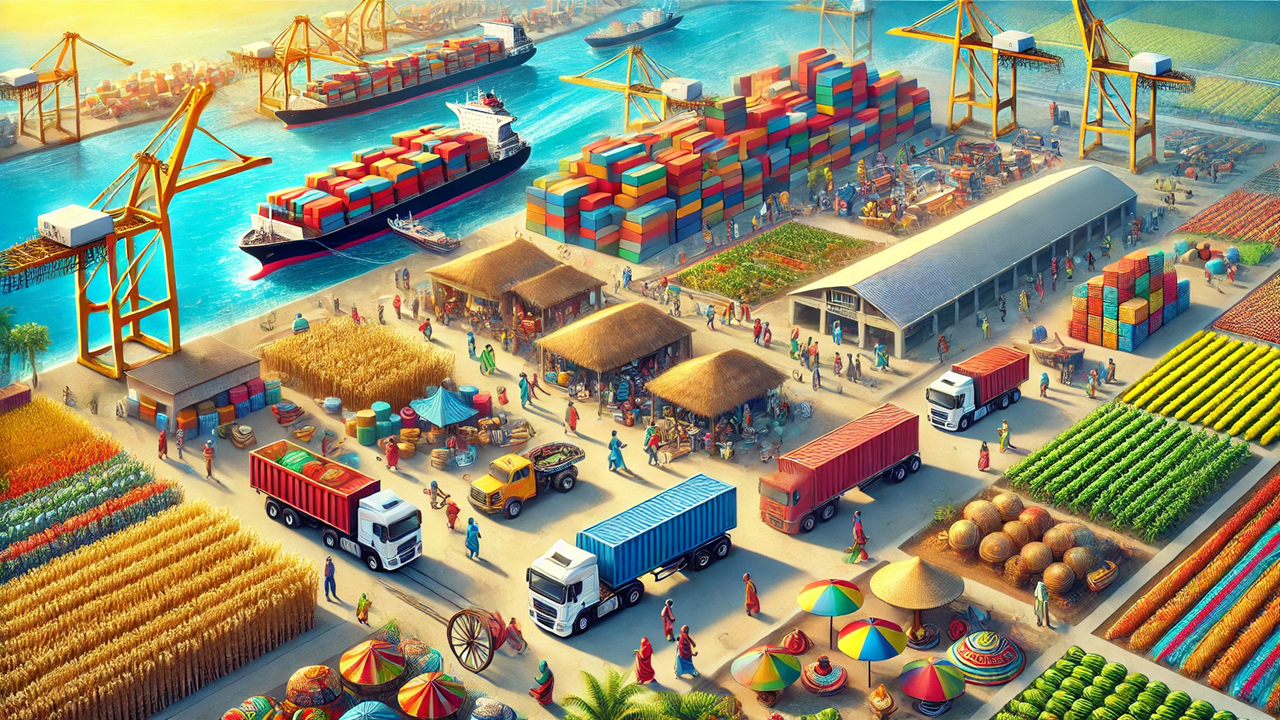Breaking Trade Barriers: How AfCFTA Can Transform Africa’s Economy
A new UNCTAD report sheds light on the transformative potential of the African Continental Free Trade Area (AfCFTA). Addressing non-tariff measures and fostering regulatory convergence could unlock $7.1 billion in annual welfare gains, boost intra-Africa trade by 6%, and raise wages across the continent. The report advocates for aligning African trade policies with international standards while enhancing regional collaboration and transparency.

The African Continental Free Trade Area (AfCFTA), uniting 1.4 billion people and a combined GDP of over $3 trillion, is poised to redefine Africa’s economic landscape. A recent report by the United Nations Conference on Trade and Development (UNCTAD) emphasizes that addressing non-tariff measures (NTMs) could unlock unprecedented trade and welfare benefits for the continent.
The Hidden Costs of NTMs
While tariffs often dominate trade discussions, NTMs—such as sanitary and phytosanitary (SPS) measures and technical trade barriers (TBT)—present a more significant obstacle to intra-African trade. These measures, designed for public health and safety, vary widely across countries, adding complexity and costs for businesses. For instance, regulatory divergence alone contributes to over 12% of trade costs in agri-food sectors and 2% in manufacturing, with figures rising sharply in some regions.
Welfare Gains and Economic Potential
The report quantifies the immense potential of eliminating non-tariff barriers (NTBs) and fostering regulatory convergence.
Scenario 1: Removing NTBs like quotas and price controls could yield $1.6 billion in annual welfare gains.
Scenario 2: Harmonizing technical measures within Africa doubles this figure to $3.4 billion.
Scenario 3: Aligning with international standards pushes welfare gains to a staggering $7.1 billion while boosting intra-Africa trade by 6% and raising real wages by 0.8%.
Processed agricultural goods, machinery, and pharmaceuticals are expected to drive export growth, highlighting the structural transformation of Africa’s economy.
Challenges to Overcome
Africa applies fewer technical measures than global averages, particularly in manufacturing, where regulatory intensity is 50% lower. This disparity, compounded by limited transparency in publishing regulations, creates hurdles for businesses seeking to expand across borders.
The Path to Regulatory Convergence
UNCTAD advocates for a phased approach. The African Organisation for Standardisation (ARSO) has already set the stage by proposing subsets of international standards tailored to the continent’s unique context. However, adoption remains low, and the report calls for intensified efforts by AfCFTA’s Sub-Committees to promote regulatory alignment.
Transparency: The Missing Link
Making all mandatory regulations freely available online is a critical step toward reducing trade costs and fostering trust. UNCTAD’s data collection efforts revealed significant gaps in transparency across the continent, underscoring the urgency of this recommendation.
A Vision for Inclusive Growth
The report highlights a clear strategy: African countries should align SPS and TBT measures with international benchmarks like Codex Alimentarius while leveraging regional standards for intra-Africa trade. This dual approach balances global competitiveness with regional adaptability, paving the way for economic resilience and diversification.
The UNCTAD report paints a compelling picture of what’s possible when African nations work together to dismantle trade barriers. By aligning regulations, embracing transparency, and leveraging the AfCFTA framework, Africa can not only boost trade but also catalyze economic development and improve livelihoods across the continent.
- FIRST PUBLISHED IN:
- Devdiscourse










